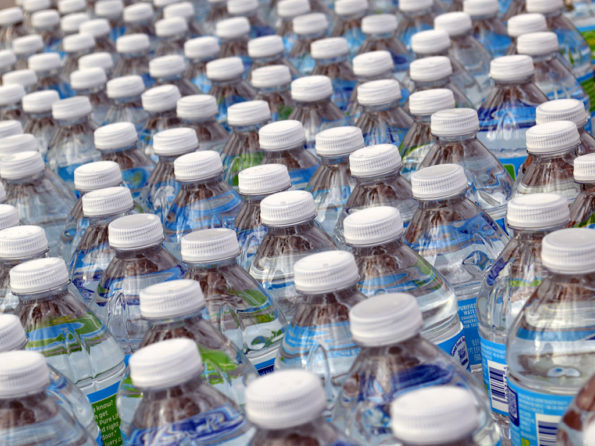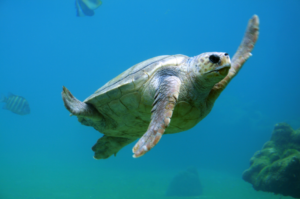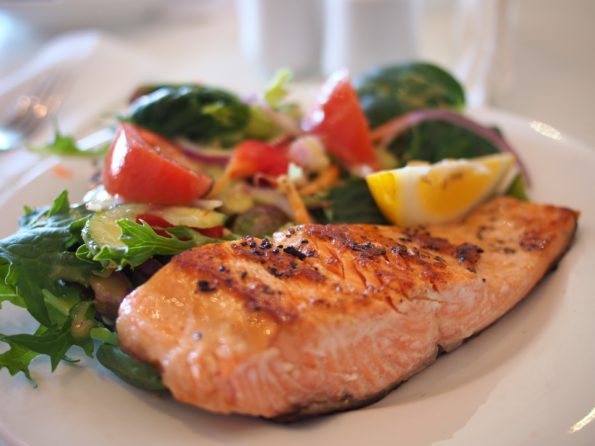Posted By: Sophie L.
Featured Image: Pierre ARNOU / pexels
Every second of every day in the US, 1,500 plastic water bottles are consumed (according to an article by Petz Scholtus). That means that in the time you have read this, about 9,000 plastic water bottles have been consumed.

Plastic water bottles are very convenient, especially when you’re running late and don’t want to take the time to fill up a water bottle. Yet the excessive water bottle consumption patterns have great impacts on the oceans around the world and the marine life that consider the ocean their home.
It is true that water bottles are easy to recycle, yet very few water bottles are indeed recycled. According to Petz Scholtus of treehugger, 80% of all water bottles bought last year (2015) were thrown away, meaning only 20% were disposed correctly. Recycling can be thought of a difficult process, especially since water bottles are not commonly thought of as being recyclable. However, plastic water bottles can be thrown into the average home recycling bin, and collected each week with the rest of the recycling. From there, they can be converted into something new. As for the thrown away bottles, they are left to decompose – which takes a lot longer than most would think. According to the New Hampshire Department of Environmental Services it takes a single plastic water bottle 450 years to decompose, meaning plastic water bottles consumed in 2016 will decompose in 2466.
Plastic water bottles and many other kinds of trash including styrofoam aren’t just thrown into the oceans; they are carried away by wind and rain and end up floating across the globe where they stay, unless they are washed up on shore or eaten by wildlife. Plastic is everywhere. The Center for Biological Diversity reports that recent research suggests pollution has gotten to a point where there is no longer one square mile in the ocean that isn’t polluted with some sort of plastic. Plastic which ends up in the ocean, can be pulled into a “plastic vortex” such as the Great Pacific Garbage Patch, which is located between Japan and the US. Microplastics are drawn to this center through circular currents pulling the trash together, where some stays at the surface, but around 70% of denser plastics are estimated to be near the ocean floor under the garbage patch. To learn more, read National Geographic’s article on the Great Pacific Garbage Patch. Clearly, high consumption of plastic water bottles adds to the never ending environmental hazard.
Effects on Wildlife
The first obstacle in a sea turtle’s life is one of the hardest. After hatching on the land, they must successfully make it into the ocean, escaping the grasp of hungry predators. Once they make it to their safe haven, they face an even bigger problem for the rest of their life that they cannot recognize: pollution. According to Clear Water Action, marine plastic pollution affects 86% of all sea turtle species.

Once in the water, plastic breaks up into smaller pieces. This not only makes it easier to mistake for food, but it also becomes more dangerous to the health of marine animals. According to Lauren Melella of Global Animal, sea turtles today consume more than twice the amount of plastic than they did 25 years ago. The consequences of ingesting plastic include stomach blockages, starvation and puncturing internal organs. The toxins can also affect the turtle’s reproductive cycle, adding to the preexisting issue of species vulnerability and endangerment.
Sea turtles aren’t the only ones who are being taken out by the trash – seabirds suffer greatly too. Birds are mentally incapable of differentiating plastic from any other type of food. Plastic is often fed to baby chicks by their parents. Consuming plastic takes up room in their stomach and they are getting no nutrients in return. This causes birds to take in less food which leads to starvation. Plastic pollutants affect the majority of seabirds, researchers estimate that of all seabirds alive today, 90% have eaten plastic. Of those birds, 60% still have the plastic remaining in my stomach (according to Samantha Mathewson).
The following video addresses the problems that styrofoam and plastics pose for the food chain in Hawaii.
Effects on People
Toxic chemicals in plastics are released into the water when polluted into the ocean. These chemicals easily find their way into the food chain through fish due to contamination. According to the center for Biological Diversity, 12,000-14,000 tons of plastic are ingested by fish each year in the Northern Pacific Ocean alone. Plastic consumption in fish can cause death and also damage intestines. It can affect larger mammals and fish all the way up the food chain.

All of this plastic causes problems for fish, but how are people being affected? Due to our diets partly being based on seafood, consuming fish that have already been contaminated sends the trash we dump right back at us. The Center for Biological Diversity reports that in the state of California, 25% of all fish in markets were contaminated by toxins found in plastics. Obviously, if these chemicals are not good for consumption by oceanic animals, they cannot be good for us. An article by Carleton College explains the harm these chemicals can cause: some plastics contain the carcinogen, diethylhexyl phthalate, which is very toxic. There are also many other chemicals in plastics that can cause birth defects, problems in the immune system, and cancer. Plastic water bottles containing BPA are linked to hormonal problems. These dangerous toxins can end up on our dinner plate if we are not careful with how we dispose of our trash.
How Can You Help?
There are four possible routes a water bottle can take: it can sit in a landfill and wait to decompose, where it releases toxins; it can flow in rivers until it reaches the ocean where it can either end up as an animal’s meal, or end up in a plastic garbage patch, or it can be recycled, where it is reproduced into another product.
An easy way to avoid all four pathways is to take the extra time to fill up a reusable water bottle instead of grabbing a disposable one. IF you still use disposable water bottles, at least be responsible and recycle it when you are done. THis way, one less water bottle ends up in a landfill or in the ocean. Ultimately it is our choice: are plastic water bottles really worth it?

The link to National Geographic’s article on the Great Pacific Garbage Patch leads to this page:
https://www.flickr.com/photos/shoppeolina/16346786329/in/photolist-qUvy4B-6Ttgyn-bwfJZM-9zCyu2-966Yf8-7CP8c9-e4hvtV-qjSY2m-npERNB-4cDoEm-rr1ftp-8nQ8gp-dVquy8-6o5VQa-4XcKJQ-77PEsM-bzuyRt-9jAnCm-49Zhip-7CDAEv-boRs3Y-cDLM5s-aMsnvz-dWdJ9p-oSx1pY-MNtyh-bXcZzW-izaScB-9iUkYE-3eFgC2-kZcAWF-Jt2xzz-bN9cYg-qBQRQ6-8uZig3-piuL9X-3wEPQ8-cSPMtY-qeyNTj-iFNygf-a3XLYU-NqsVV-oRstcN-dYNfUb-5uGVQ5-hg9ST2-cBk86S-2EHenj-izbgPN-4GNV3t/
Am I missing something here?
Sorry, I accidentally added a link to the wrong thing. Here is the link to the actual article: http://www.nationalgeographic.org/encyclopedia/great-pacific-garbage-patch/
Thanks.
This is a great article and explains in depth how big of a problem this really is. Great job Sophie!